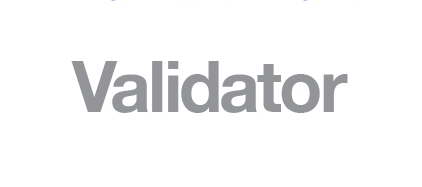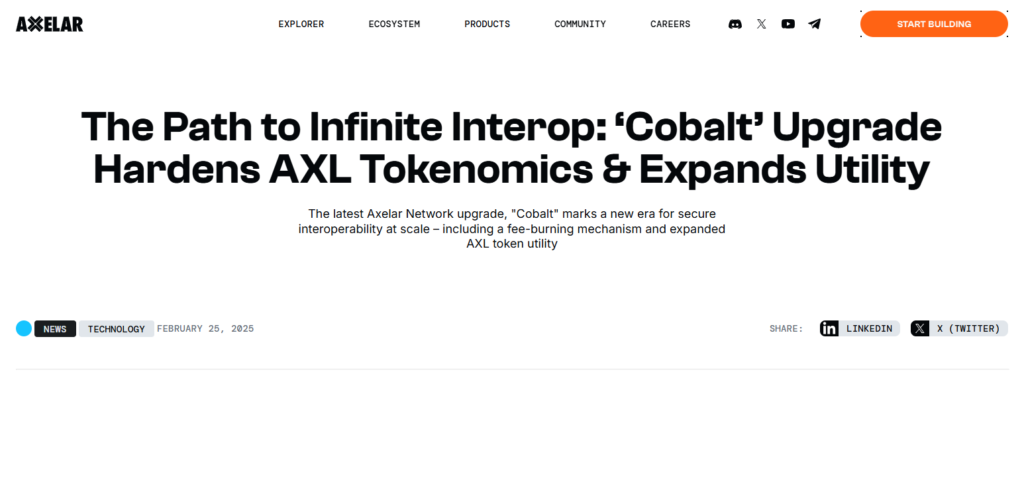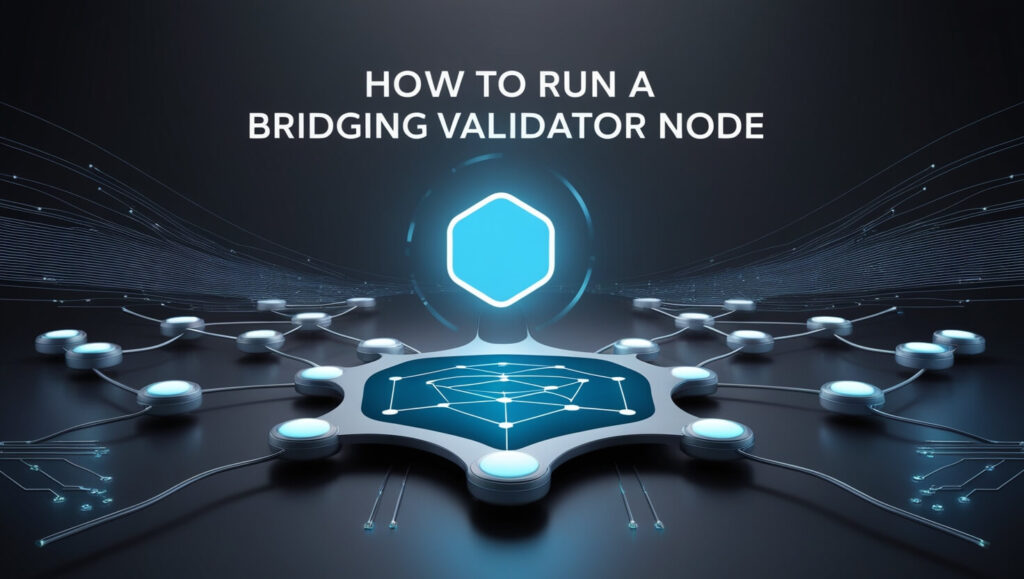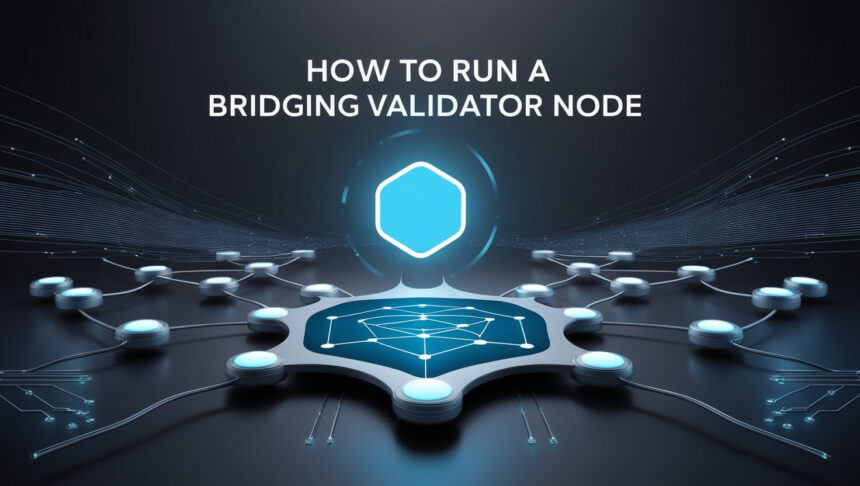In this article I will cover the How to Run a Bridging Validator Node operation. Bridging validator nodes are essential for the secure communications between different blockchains.
They validate and relay cross-chain transactions, ensuring the interoperability runs smoothly. If you wish to support rewards earning blockchain bridges, knowing how to operate one increases your chances of success.
What is Validator Node?
A validator node is a specific type of computer in a blockchain network that verifies transactions, maintains consensus, and secures the network.

Validators check and authenticate new blocks in accordance with the rules of the network for integrity and fraud prevention. Validators put up tokens as collateral in proof-of-stake (PoS) and similar mechanisms for validation.
Bridging validator nodes specifically enable cross-communication between blockchains by confirming transactions that occur across chains. Operating a validator node requires advanced technical skills, requisite computing machinery, and strict security compliance.
How to Run a Bridging Validator Node

Let’s look at an example of a platform to show the steps necessary to run a bridging validator node: Shardeum.
Shardeum: Running a Validator Node Step By Step
Ensure the Hardware Requirements Fit:
A minimum of 1 Gbps internet, an 8-core CPU, a stable 16 GB RAM, and 500 GB of SSD.
Install Prerequisites:
Make sure to have Docker and Docker Compose installed on your machine which are required to containerize and run the node.
Download Validator Script
Visit or access the official Shardeum documentation and download the validator script. Make sure to have permissions to run the script.
Configure the Node
Setting the validator node will require you to run the downloaded script. You need to setup configuration details like port numbers and passwords.
Check Web Dashboard
With your browser, open the Shardeum web dashboard in order to monitor and manage your node.
Connect Wallet
Staking and earning rewards will only be possible after linking your MetaMask wallet which is connected to the dashboard.
Stake Tokens
You will need to set the required amount of SHM tokens in order to activate your validator node.
Start the Node
Utilize the dashboard or even the CLI commands to start your node. You need to confirm it is syncing with the network.
Monitor Performance
Consistently verify that the node is functioning properly by checking its status and logs.
Maintain and Update
Your node has to be updated regularly to the latest software versions, and it has to be optimized to prevent incurring penalties.
Other Place Where Run a Bridging Validator Node
Arbitrum
Arbitrum operates a bridging validator node for its optimization Layer 2 network to allow seamless interfacing on Ethereum.

It’s use of optimistic rollups is one of the most distinct features, as it alleviates burden on-chain data while still requiring on-chain validators to supervise cross-chain transaction execution.
These validators have an important function in the trustless ecosystem of Arbitrum, preserving seamless data interchange for rapid and low-cost transfers while retaining the decentralized security framework of Ethereum.
Axelar
Axelar operates a bridging validator node for universal interoperability between various blockchain networks. Its approach is distinct in utilizing a decentralized validator set to securely handle cross-chain routing as well as message delivery.

Different from centralized bridges, Axelar validators cross-validate and cross- execute transactions in a trustless manner, facilitating communication across chains. With this structure, Axelar can onboard more networks while being consistent, scalable and multi-chain decentralized in its bridging operations.
Configuring Validator Parameters
Staking Amount: Set a threshold consensus of the amount of tokens that allows one to validate and cover a portion of the network cost.
Commission Rate: Set the violator reward policy from the delegates in a manner they get to keep certain percentage of the rewards.
Minimum Self-Delegation: Specify the limitation on the self-delegated tokens that the violator must stake to stay active within the network.
Key Management: Establish and protect the consensus keys that are essential to block signing, and performing the tasks needed to properly validate.
Peer Connections: Set the number of minimum peers to guarantee strength and stabilization of network communication and the upper side of the range as a cap.
Block Time Settings: Establish upper and lower thresholds for the production and proposal of novel and innovative blocks.
Slashing Conditions: Define punitive actions that can be taken against malicious actions, double transaction signing, lack of activity.
Gas and Resource Limits: Striking a balance with regard to the number of transactions that can be processed accepts optimizations.
Backup and Monitoring Tools: Set up additional services and tools that ensure better service uptime and tracking.
Testing and Validation
Run on Testnet
Set up the node on a testnet to validate its performance in a risk-free environment.
Check Logs and Errors
Look through logs for various issues including—but not limited to—missed blocks, failures in connecting, and key errors.
Validate Transactions
Make sure that all transactions from your node are being processed and validated accurately.
Network Synchronization
Make sure your node is up-to-date with the current latest blocks.
Security Testing
Conduct scans for vulnerabilities, and evaluate the management of security keys for potential risks.
Maintaining and Securing the Node

Regular Software Updates
Update node software, dependencies, and apply security patches regularly and without fail.
Automated Monitoring
Implement monitoring applications that track uptime and performance and notify you of potential failures and slashing threats.
Secure Key Storage
Private keys should be kept in secure hardware like an HSM, Ledger, or storage that is not connected to the internet.
Firewall and Access Control
Limit connectivity via firewalls; block all non-essential ports; disable password-based logins and enable SSH key-based authentication.
Data Backups
Important configurations and keys should be backed up regularly as part of an office policy.
Pros & Cons
| Pros | Cons |
|---|---|
| Earn rewards for validating blocks | Requires technical knowledge and maintenance |
| Participate in network governance | Risk of slashing for misbehavior or downtime |
| Strengthen blockchain decentralization | High hardware and bandwidth requirements |
| Potential long-term income | Constant need for monitoring and updates |
| Build reputation in the blockchain ecosystem | Security risks if keys are compromised |
Conclusion
To summarize, the task of operating a bridging validator node is critical in the support of blockchain interoperability and security. It helps in earning rewards while maintaining the network as well as facilitating communication between different blockchains.
Nevertheless, it demands a high level of technical expertise, round-the-clock attention, and stringent security protocols. When configured and maintained adequately, a bridging validator node can contribute meaningfully to the decentralized network while being a part of the ecosystem’s incentives.









